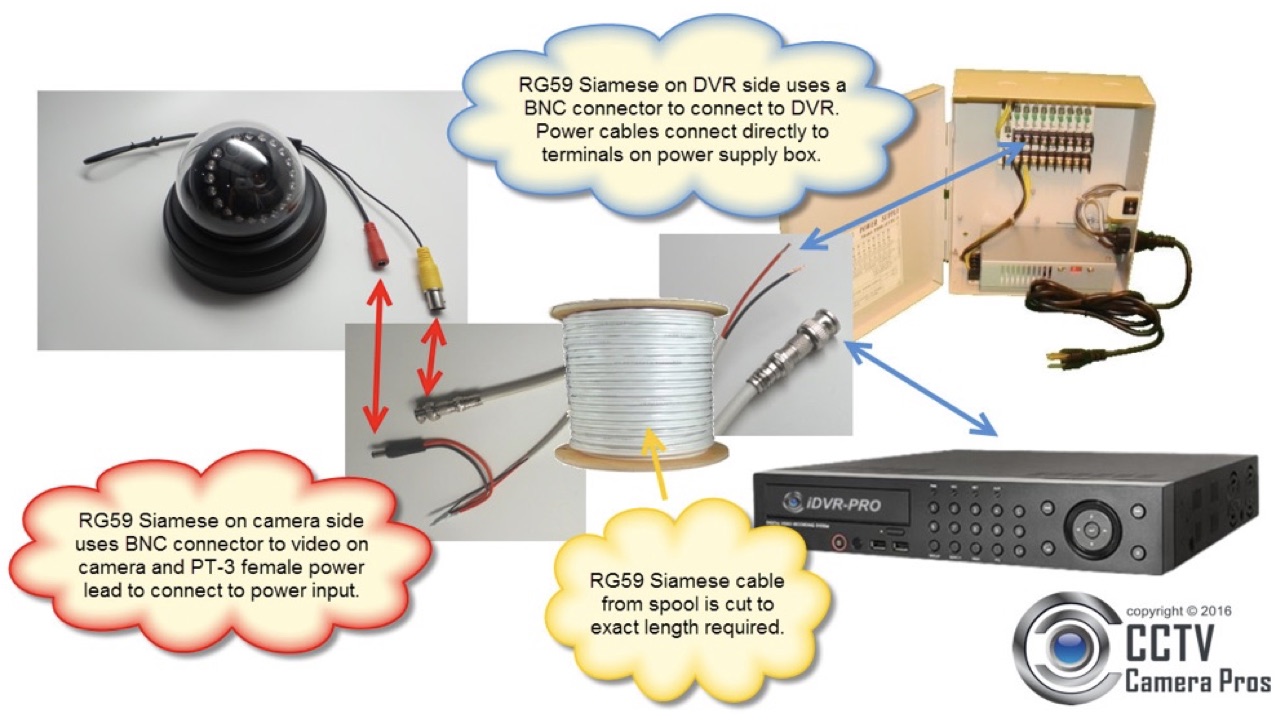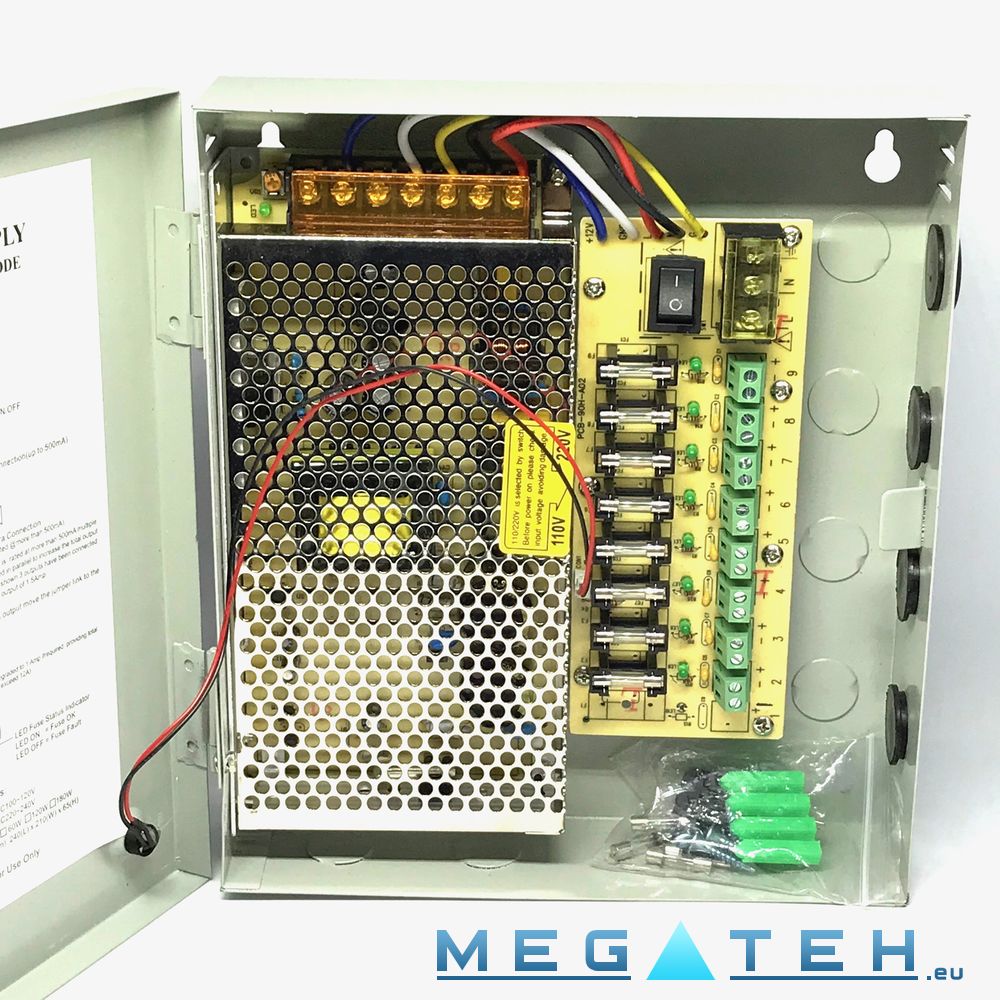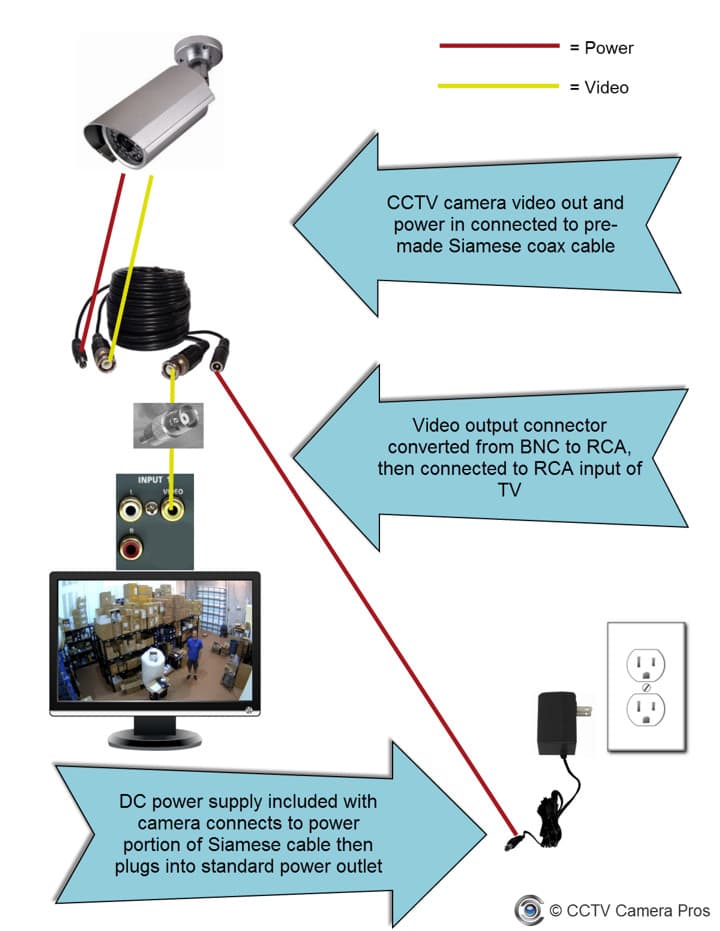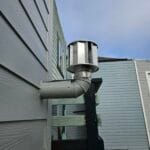CCTV cameras are primarily powered by either direct electrical connections or batteries. Some models can also utilize solar power.
In today’s fast-paced world, the security and monitoring provided by CCTV cameras have become indispensable for both businesses and homes. These vigilant electronic eyes work round the clock, ensuring safety and offering peace of mind. Understanding how CCTV cameras are powered is crucial for optimal placement and functionality.
Whether it’s for deterring theft, monitoring traffic, or keeping an eye on your property, the power source of these cameras plays a pivotal role. With advancements in technology, options like wireless cameras powered by batteries or solar energy are becoming increasingly popular, offering more flexibility in installation and reducing dependency on traditional power sources. This adaptability ensures that CCTV systems can be tailored to meet specific needs, providing efficient and reliable surveillance solutions.
Introduction To Cctv Camera Powering
Understanding how CCTV cameras are powered is vital for security. It ensures they work day and night, capturing everything. This section covers the basics of powering these security tools.
Basic Components
CCTV cameras need several parts to work. These include:
- Camera: Captures video.
- Lens: Focuses on the scene.
- Housing: Protects the camera.
- Power Supply Unit (PSU): Gives power.
- Cables/Wires: Connect components.
Power Requirements
CCTV systems need a stable power source. Different types have different needs:
| Type | Power Source |
|---|---|
| Wired Cameras | Directly from a PSU |
| Wireless Cameras | Batteries or solar panels |
| IP/Network Cameras | Power over Ethernet (PoE) |
Always check the voltage and current before connecting a camera. This prevents damage and ensures safety.

Credit: videos.cctvcamerapros.com
Types Of Cctv Cameras
Understanding the different types of CCTV cameras helps in selecting the right one for your needs. Each type offers unique features and power requirements. Let’s explore the main categories.
Analog Cameras
Analog CCTV cameras represent traditional technology. They send video over coaxial cable. Power often comes from a separate adapter. Main points include:
- Coaxial Cable: Transmits video to a DVR.
- Power Source: Usually a 12V DC adapter.
- Video Quality: Standard definition.
- Installation: Simple with less cabling.
Ip Cameras
IP cameras, or network cameras, use digital signals. They connect via Ethernet or Wi-Fi. Key aspects are:
- Ethernet Cable: Provides power and data through PoE.
- Wi-Fi: Wireless cameras need power outlets.
- High Definition: Offers superior video quality.
- Flexibility: Easier to install and adjust.
Both analog and IP cameras can integrate with modern surveillance systems. Your choice depends on the power setup and image quality you need.
Wired Power Solutions
Reliable power is vital for CCTV cameras. Wired power solutions ensure continuous surveillance. Two common methods exist: direct power sources and Power over Ethernet.
Direct Power Sources
Direct power sources provide consistent electricity to CCTV cameras. These sources typically involve electrical wiring. They connect cameras directly to the power supply. This method requires professional installation. It ensures cameras remain active, especially in power outages with backup systems.
- Stable and constant power supply
- Requires electrical wiring
- Professional installation needed
- Works with backup power systems
Power Over Ethernet (poe)
Power over Ethernet simplifies wiring. It allows network cables to carry electrical power. PoE is ideal for IP cameras. It uses a single cable for both power and data transmission. This setup reduces cable clutter. It also allows for easier camera installation and relocation.
| Benefits | Considerations |
|---|---|
|
|
PoE supports advanced camera features. These include pan-tilt-zoom controls and remote access. This method is scalable for future expansions.

Credit: www.megateh.eu
Wireless Power Options
Today, we explore Wireless Power Options for CCTV cameras. This technology lets cameras run without direct power lines. It’s perfect for places hard to wire. Let’s dive into the two main types: battery-operated and solar-powered systems.
Battery-operated Cameras
Battery-operated cameras are easy to install anywhere. They don’t need cables. This makes them great for moving around. Here’s what you need to know:
- Flexibility: Place them anywhere.
- Easy setup: No drilling or wiring needed.
- Maintenance: Just change batteries when needed.
Remember, battery life varies. It depends on camera use and type. Always check battery level to keep your camera running.
Solar-powered Systems
Solar-powered CCTV cameras use the sun to work. They are eco-friendly and save on electricity. Here are their benefits:
- Eco-friendly: They use renewable energy.
- Cost-effective: Save money on electricity bills.
- Less maintenance: Solar panels last a long time.
These cameras need sunlight to charge. So, place them where they can get plenty of sun. They’re great for outdoor areas like gardens or backyards.
Power Supply Units
Understanding how CCTV cameras are powered is crucial. A key component is Power Supply Units (PSUs). PSUs ensure cameras work well. They come in two main types.
Centralized Power Supplies
Centralized PSUs power multiple cameras from one point. This method is efficient. It reduces the clutter of wires. It’s ideal for large setups. Centralized PSUs often go in secure locations. This keeps power consistent and safe.
- Pros: Less wiring, easier maintenance.
- Cons: If it fails, all cameras go down.
Individual Adapters
Individual adapters power one camera each. This is simple. It’s good for small setups. Each camera has its own power source. This can mean more wires.
- Pros: If one fails, others work.
- Cons: More wires, can be messy.
| Power Supply Type | Pros | Cons |
|---|---|---|
| Centralized | Less wiring, easier maintenance | If it fails, all cameras go down |
| Individual Adapters | If one fails, others work | More wires, can be messy |
Choosing the right power supply depends on your needs. Think about size, safety, and setup. Both centralized and individual adapters have their place.
Backup Power Systems
Security is crucial for any property. CCTV cameras are key to monitoring. But what happens when power cuts hit? Backup power systems keep cameras running. Let’s delve into the solutions that ensure your CCTV’s never go dark.
Uninterruptible Power Supply (ups)
UPS systems provide instant power during outages. They are battery-backed devices. They kick in the moment regular power fails. A UPS can power cameras for a short period. This period usually ranges from a few minutes to hours. This time allows for a smooth transition to generators or the return of main power.
Generators
When outages last longer, generators are the solution. They can power CCTV systems for extended periods. Generators come in various sizes. They need fuel like gas, diesel, or natural gas to run. A generator starts manually or automatically. Once running, it can power the entire security system until the main power returns.
- Generators ensure continuous operation.
- They are ideal for long-term power loss.
- Maintenance is key for reliability.
Installation Considerations
Understanding installation considerations is key when powering CCTV cameras. It ensures a smooth setup and reliable operation. Let’s explore the essential aspects.
Cabling And Connectors
Choosing the right cables and connectors is crucial. They power the cameras and transmit data. Here are the factors to consider:
- Length: Measure distance from cameras to power source.
- Type: Use coaxial or Ethernet cables based on camera type.
- Quality: Opt for weather-resistant cables for outdoor use.
- Connectors: Ensure compatibility with both camera and recording equipment.
Environmental Factors
Environment plays a big role in CCTV camera installation. Consider these elements:
- Weather: Choose cameras with suitable weather ratings.
- Location: Position cameras away from direct sunlight.
- Temperature: Verify the operational temperature range.
- Protection: Use protective housings for harsh conditions.

Credit: www.cctvcamerapros.com
Maintenance And Troubleshooting
Maintaining and troubleshooting CCTV cameras is crucial. Regular checks ensure they work properly. Power issues can disrupt their function. Let’s explore how to keep cameras running smoothly.
Regular Checks
Performing routine inspections is key. It prevents unexpected failures. Check camera lenses for clarity. Ensure wires are intact. Look for corrosion on connections. Record times and dates of checks. Use checklists for consistency.
- Inspect lenses for dirt or damage
- Test camera angles and views
- Verify recording functionality
- Examine power supplies and backup batteries
Common Power Issues
Power problems can cause camera downtime. Identifying these issues early is vital. Look for signs like flickering images. Check if cameras are unresponsive. Test power adapters for faults. Replace batteries if needed.
| Issue | Sign | Action |
|---|---|---|
| Power outage | Cameras off | Check circuit breakers |
| Low battery | Weak signal | Replace battery |
| Faulty wiring | Intermittent power | Repair or replace wires |
Keep spare batteries and adapters. Label all components. This makes troubleshooting faster. Update maintenance logs. This helps track recurring issues.
Frequently Asked Questions
What Powers Cctv Cameras?
CCTV cameras are typically powered by either direct electrical connections to the power grid, battery packs, or via Power over Ethernet (PoE) technologies.
Are Cctv Cameras Energy Efficient?
Modern CCTV cameras are designed for energy efficiency, often using low-power components and smart features like motion detection to conserve energy.
Can Cctv Work Without Power?
Without a direct power source, CCTV cameras won’t function unless they’re equipped with battery backup or solar power options for uninterrupted surveillance.
How Long Can Cctv Run On Batteries?
Battery-operated CCTV cameras can run from several hours to a few days, depending on battery size and camera power consumption.
Is Wireless Cctv Truly Wire-free?
Wireless CCTV refers to data transmission; most still require a wired power source, although some models are battery-powered for a completely wire-free setup.
Conclusion
Understanding the power dynamics of CCTV cameras is crucial for optimal surveillance. Wired, wireless, and PoE options offer flexibility for diverse needs. Always consider the environment and power requirements for sustained security. Choose the right power source, and stay vigilant with reliable CCTV operations.




